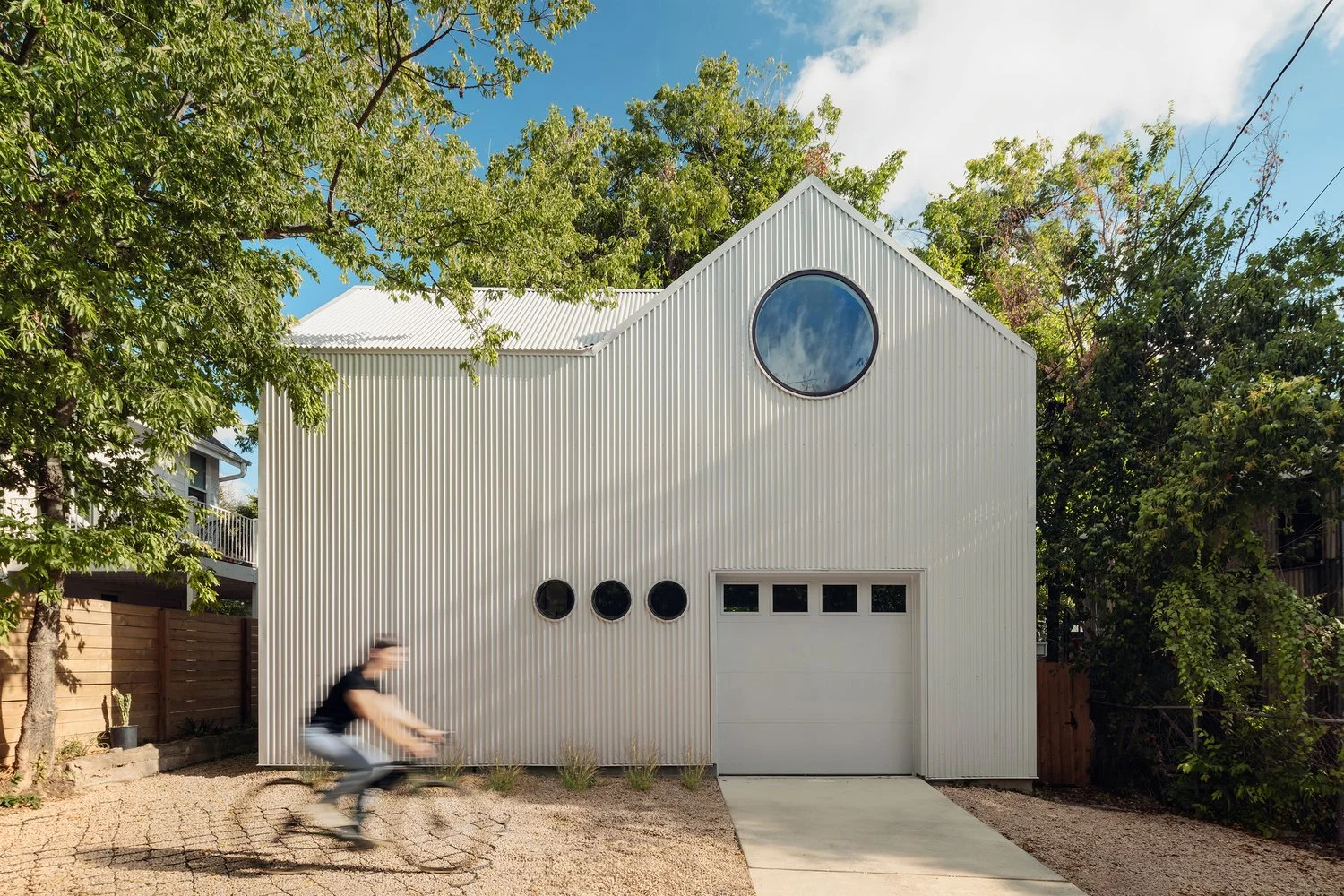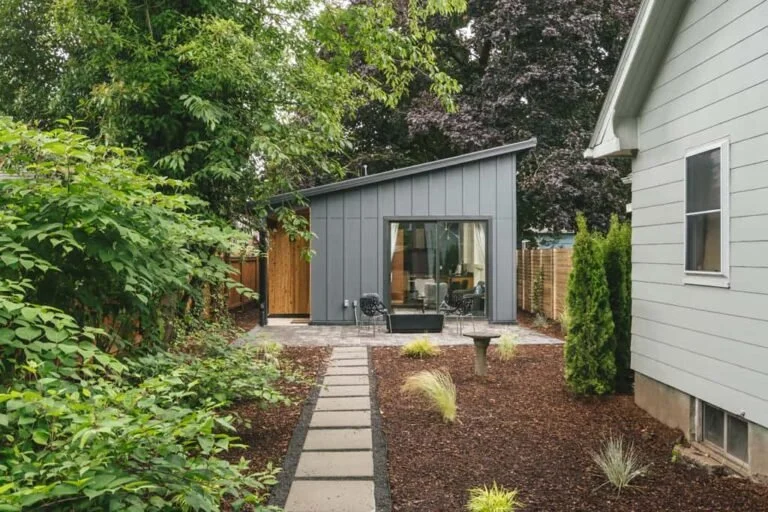The Rise of the ADU: A Smarter, Sustainable Housing Solution for Modern America
Introduction
Accessory Dwelling Units (ADUs) have rapidly evolved from niche housing solutions into mainstream policy tools that tackle some of America’s most pressing challenges: affordable housing shortages, multi-generational household needs, and environmentally responsible urban growth. These compact, self-sufficient living spaces are reshaping the urban landscape by offering a harmonious balance between density and livability. Whether you're a homeowner seeking passive income, a family planning for aging in place, or a policymaker navigating land use reform, ADUs present a future-forward solution for cities of all sizes.
ADUs are not just a trend—they’re a revolution in how we use space. As American cities grow more crowded and housing costs continue to climb, ADUs provide an adaptable and often underutilized answer to the housing shortage. They're discreet, cost-effective, and can be built quickly compared to traditional homes. The scalability of ADUs also means that they work in both urban and suburban contexts, creating more resilient housing ecosystems. Local governments are increasingly seeing the value in these units as a tool to combat homelessness, encourage intergenerational living, and foster community cohesion.
In this comprehensive guide, we explore what ADUs are, why they're surging in popularity, how they’re being implemented nationwide, and how major cities like Atlanta and Los Angeles are leading the charge. From cost breakdowns to local permitting perks, we unpack everything you need to know about ADUs and their long-term investment value. We also explore the social, financial, and ecological impacts of ADUs, along with use cases for communities, small developers, and policy innovators.
You’ll learn how different states are supporting ADU construction through legislation and funding, how average homeowners are turning garages into gold mines, and how urban planners are thinking about the future of backyard housing. Whether you’re dreaming about transforming your property or just curious about where the housing market is heading, this guide will offer data-driven insights, real-world examples, and step-by-step strategies to navigate the growing ADU landscape.
What Are ADUs?
Accessory Dwelling Units (ADUs) are independent residential dwellings located on the same lot as a primary home. Commonly referred to as granny flats, in-law suites, backyard cottages, or garage apartments, ADUs can be standalone structures, home additions, or converted interior spaces. Their hallmark is autonomy—each unit includes a kitchen, bathroom, sleeping area, and private entrance.
These units are designed to be self-sufficient and versatile. They range from cozy one-bedroom bungalows tucked behind the main house to spacious, stylish lofts above garages. As housing trends evolve, so does ADU design—with many new builds featuring sustainable materials, smart technology, and universal design elements to accommodate aging or disabled residents.
Types of ADUs & Popular ADU Styles
ADUs come in a variety of architectural and functional styles to meet different homeowner needs and aesthetic preferences. Here are some of the most in-demand styles in today’s market:
Modern Minimalist: Clean lines, flat roofs, and large windows make these ideal for urban infill lots.
Craftsman Bungalow: These ADUs mirror the charm of early 20th-century architecture with gabled roofs and wood accents.
Scandinavian Cabin: Emphasizing simplicity and function, these units often feature wood siding and sleek interiors.
Urban Loft: Built above garages or as two-story units, loft-style ADUs often include high ceilings and open layouts.
Farmhouse Cottage: With metal roofing and rustic finishes, these are popular in suburban and rural markets.
Each of these styles can be tailored to match the primary home or to complement neighborhood character, depending on local design guidelines.
Leading ADU Builders and Prefab Makers
Whether you're building from the ground up or ordering a prefab unit, selecting the right manufacturer or builder is crucial. Here are some top-rated ADU builders and prefab companies across the U.S.:
Mighty Buildings (CA): Offers sustainable, 3D-printed prefab ADUs with fast delivery timelines.
Abodu (CA & TX): Delivers turn-key prefab units with city-preapproved models in select markets.
Cover (CA): Specializes in high-end, modern, prefab ADUs designed with software precision.
Studio Shed (Nationwide): Modular backyard studios and ADUs with flexible floorplans.
Modal Living (UT & CA): Delivers fully built units with sleek, modern styling.
SnapADU (San Diego): Design-build specialists focused solely on ADUs with an in-depth permitting process.
When choosing a builder, look for those with experience in your local market, strong permitting support, and customization options that align with your property and goals.
Detached ADUs: Standalone buildings in backyards or side yards. These often resemble miniature homes and provide maximum privacy.
Attached ADUs: Extensions that share at least one wall with the main house. These can be seamless additions that match the architecture of the existing home.
Interior Conversions: Transformed garages, basements, or attics. These are cost-effective and make use of existing square footage.
Above-Garage Units: Built over existing garages to maximize vertical space. Perfect for properties with limited yard space.
Prefabricated or Modular ADUs: Factory-built units delivered and assembled on-site for efficiency. These often reduce construction timelines and costs.
ADUs offer exceptional versatility, making them key players in modern urban design. They empower homeowners to create rental income, house extended family, or gain flexible living space—all without needing to relocate or purchase new property. ADUs also serve community needs, housing teachers, nurses, and local workers while easing the pressure on public infrastructure. In some areas, ADUs are also helping to address homelessness by providing transitional or permanent supportive housing.
Why ADUs Matter More Than Ever
The rising popularity of ADUs reflects deep shifts in the national housing landscape:
Affordability: ADUs offer more affordable rental options in pricey metro areas. Their construction is often less expensive than traditional homes and apartments, making them an ideal response to housing crises.
Density Without Displacement: ADUs introduce "gentle density," allowing neighborhoods to evolve without large-scale development or resident displacement. This can help cities meet housing goals without overwhelming local infrastructure.
Multigenerational Living: ADUs support family caregiving and co-living while preserving independence. They’re a modern solution to cultural traditions that value extended family. Grandparents can live near grandchildren without sacrificing privacy or autonomy.
Sustainability: With a smaller footprint, ADUs use fewer resources, emit less carbon, and pair well with green technologies like solar panels. Cities encouraging ADUs are also helping reduce urban sprawl and vehicle emissions.
Remote Work Advantage: The post-pandemic shift to remote work has fueled demand for private, functional spaces—something ADUs can offer seamlessly. Many homeowners now use ADUs as home offices, studios, or even podcast recording booths.
Financial Leverage: Building an ADU can increase a property’s value and serve as a long-term income stream. Financing options are expanding, with lenders offering HELOCs, renovation loans, and ADU-specific lending products. For retirees, ADUs can generate passive income while aging in place.
National Momentum: Federal and State Trends
Across the U.S., lawmakers and agencies are adapting zoning laws and incentives to accelerate ADU construction. The trend is gaining momentum in both red and blue states, proving that ADUs offer bipartisan appeal as practical, low-cost solutions to housing shortages.
LocationPolicy HighlightsCaliforniaState laws override restrictive local ordinances; ADUs up to 1,200 sq ft allowed.OregonRemoved owner-occupancy and parking mandates statewide.VermontStreamlined approval and permitting process for ADU builders.WashingtonOffers grants to low-income and senior homeowners for ADU construction.Colorado (Denver)By-right ADU construction in multiple zones; fast-track approval for designs.
Federal agencies, including HUD and the Department of Energy, are now exploring how ADUs fit into national infrastructure and energy-efficiency goals. New model codes and templates are being developed to guide municipalities looking to integrate ADUs into their housing plans. Public-private partnerships, design labs, and nonprofits are contributing to the movement by creating ADU prototypes, equity models, and toolkits for both policymakers and homeowners.
Spotlight: Atlanta’s Approach to ADUs
Atlanta’s 2021 zoning updates marked a turning point for the South. Once considered too suburban for gentle density, the city has embraced ADUs as a strategy for equitable development and smart growth.
Key policies include:
ADUs up to 750 sq ft allowed by right in R-4 and R-5 zones.
Detached or interior ADUs supported without owner-occupancy requirements.
Reduced parking minimums to encourage development.
Atlanta Highlights
Priority permitting within BeltLine Overlay areas.
City-provided design guides.
Partnerships with nonprofits and land trusts.
Pilot programs funding ADUs for low-income or aging residents.
Community engagement workshops to educate homeowners and designers on ADU opportunities.
Pro Tip: Properties near the Atlanta BeltLine may qualify for bonuses like increased square footage, tax incentives, or expedited permitting. Reach out to local officials to see if your lot qualifies.
Spotlight: Los Angeles and the ADU Boom
Since California's 2017 ADU laws, Los Angeles has emerged as a leader in implementation. What was once considered a bureaucratic nightmare has turned into one of the most streamlined ADU development pipelines in the country.
Key features include:
ADUs up to 1,200 sq ft permitted across most residential lots.
No parking or minimum setback requirements for many ADUs.
Fast-track permitting via LA’s ADU Standard Plan Program.
LA Highlights
Over 25,000 permitted ADUs as of 2024.
Grants for elderly and low-income homeowners.
Online ADU Portal with plans, webinars, and builder directories.
Educational campaigns and walk-through guides for first-time builders.
Neighborhood councils offering input and feedback loops on design preferences.
Pro Tip: Join an LA Planning-hosted ADU webinar or neighborhood tour to explore successful case studies and design tips. If you're hiring a contractor, look for those certified under the ADU Standard Plan Program.
Cost and Return on Investment
ADU construction costs and returns vary by market, but generally offer attractive long-term value:
CityAvg Build CostMonthly Rent PotentialROI TimelineAtlanta$85K–$125K$1,100–$1,8005–7 yearsLos Angeles$150K–$250K$2,000–$3,5006–9 yearsNational Avg$100K–$200K$1,200–$2,5006–8 years
Ways to Maximize ROI:
Short-term rental income (where legal).
State/local grants and tax credits.
Green building upgrades (solar, insulation).
Creative leasing (e.g., furnished units or co-living).
Partnering with organizations focused on workforce or student housing.
Long-term tenant screening to reduce vacancy and turnover costs.
Note: Be sure to research STR regulations, tax implications, and permitting specifics before starting your build. Also consider insurance needs and property tax reassessments that may accompany ADU development.
Final Thoughts
In an age of urban transformation and housing uncertainty, ADUs are a stable, flexible, and forward-thinking option. They adapt to shifting household needs, expand housing access, and build long-term wealth—all while preserving the integrity of existing neighborhoods. Their potential to serve as multi-use spaces, community assets, and financial lifelines makes them one of the most compelling real estate investments of the decade.
Whether you're planning to build, invest, or advise clients, ADUs are no longer optional—they're essential. As policies, technology, and financing continue to improve, the opportunity to unlock your lot’s full potential has never been greater.
Next Steps
Consult an ADU-certified architect, city planner, or real estate advisor. Investigate zoning laws, potential returns, and funding options. With the right guidance, you can turn your backyard into a smart, sustainable, and profitable extension of your home.
Thinking about building an ADU or investing in a property with ADU potential? Contact us today to schedule a free consultation and explore your options.



